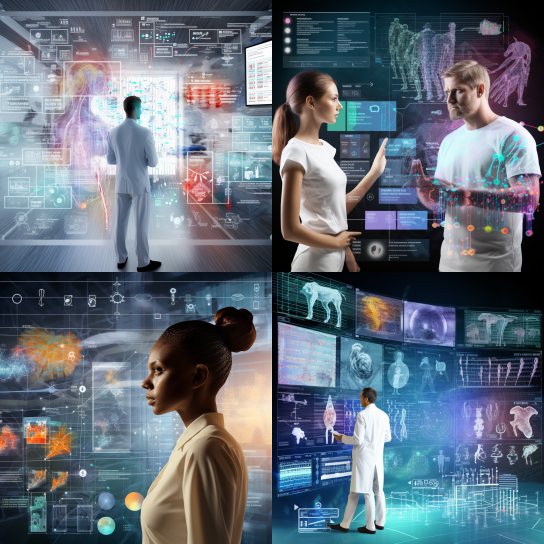Deep Learning — A Technique for Implementing Machine Learning
Deep Learning — A Technique for Implementing Machine Learning
Deep Learning — A Technique for Implementing Machine Learning
Deep Learning
Another algorithmic approach from the early machine-learning crowd, Artificial Neural Networks, came and mostly went over the decades. Neural Networks are inspired by our understanding of the biology of our brains – all those interconnections between the neurons. But, unlike a biological brain where any neuron can connect to any other neuron within a certain physical distance, these artificial neural networks have discrete layers, connections, and directions of data propagation.
You might, for example, take an image, chop it up into a bunch of tiles that are inputted into the first layer of the neural network. In the first layer individual neurons, then passes the data to a second layer. The second layer of neurons does its task, and so on, until the final layer and the final output is produced.
Real "AI Buzz" | AI Updates | Blogs | Education
Each neuron assigns a weighting to its input — how correct or incorrect it is relative to the task being performed. The final output is then determined by the total of those weightings. So think of our stop sign example. Attributes of a stop sign image are chopped up and “examined” by the neurons — its octagonal shape, its fire-engine red color, its distinctive letters, its traffic-sign size, and its motion or lack thereof. The neural network’s task is to conclude whether this is a stop sign or not. It comes up with a “probability vector,” really a highly educated guess, based on the weighting. In our example the system might be 86% confident the image is a stop sign, 7% confident it’s a speed limit sign, and 5% it’s a kite stuck in a tree, and so on — and the network architecture then tells the neural network whether it is right or not.
Even this example is getting ahead of itself, because until recently neural networks were all but shunned by the AI research community. They had been around since the earliest days of AI, and had produced very little in the way of “intelligence.” The problem was even the most basic neural networks were very computationally intensive, it just wasn’t 5 YU Ideas – A Project of the Office of the President – Yeshiva University – yu.edu/yuideas a practical approach. Still, a small heretical research group led by Geoffrey Hinton at the University of Toronto kept at it, finally parallelizing the algorithms for supercomputers to run and proving the concept, but it wasn’t until GPUs were deployed in the effort that the promise was realized.
If we go back again to our stop sign example, chances are very good that as the network is getting tuned or “trained” it’s coming up with wrong answers — a lot. What it needs is training. It needs to see hundreds of thousands, even millions of images, until the weightings of the neuron inputs are tuned so precisely that it gets the answer right practically every time — fog or no fog, sun or rain. It’s at that point that the neural network has taught itself what a stop sign looks like; or your mother’s face in the case of Facebook; or a cat, which is what Andrew Ng did in 2012 at Google.
Ng’s breakthrough was to take these neural networks, and essentially make them huge, increase the layers and the neurons, and then run massive amounts of data through the system to train it. In Ng’s case it was images from 10 million YouTube videos. Ng put the “deep” in deep learning, which describes all the layers in these neural networks.
Today, image recognition by machines trained via deep learning in some scenarios is better than humans, and that ranges from cats to identifying indicators for cancer in blood and tumors in MRI scans. Google’s AlphaGo learned the game, and trained for its Go match — it tuned its neural network — by playing against itself over and over and over.
Thanks to Deep Learning, AI Has a Bright Future
Deep Learning has enabled many practical applications of Machine Learning and by extension the overall field of AI. Deep Learning breaks down tasks in ways that makes all kinds of machine assists seem possible, even likely. Driverless cars, better preventive healthcare, even better movie recommendations, are all here today or on the horizon. AI is the present and the future. With Deep Learning’s help, AI may even get to that science fiction state we’ve so long imagined. You have a C-3PO, I’ll take it. You can keep your Terminator.
Read More









Leave a Reply